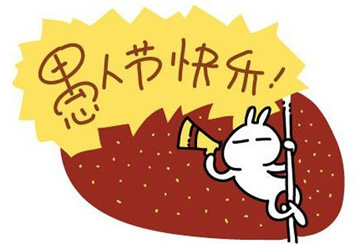April Fool’s in ancient China

Now it’s past noon, if you fell for any April Fool’s pranks today it’s your own fault, chump. Last year we fooled a few of you ourselves; this time, we're delving into Chinese history and legend. The Chinese term for April Fool’s Day is 愚人节 (yúrénjié – literally “idiots festival”). And as some of you will know – apologies to the old hands to whom this is old hat – playing jokes on friends today is a tradition which originated in China, in the Warring States period.
The story goes that the King of Chu had difficulty deciding which of his four favourite ministers to promote to the position of top court official, in effect his right hand man. So he devised a test, concocting a tall tale to see which of the ministers would believe it, and which would see through the ruse. The soldiers in the Kingdom of Qin, he announced that his spies had told him, had developed the ability to fly, with the aid of a type of stick (棒 bàng) that also doubled as a powerful weapon. Could not the Chu soldiers, he asked, also develop this capability?
The first three ministers, fearful to contradict their sovereign, promised that they would steal, replicate and defend against this new threat, respectively. The fourth minister, however, expressed doubt when asked, and diplomatically blamed the Chu spies for stupidity, rather than the King of Chu. The King of Chu, the story then abruptly ends, promoted this last minister – the implication clearly being that it was his lack of gullibility that won him the position.
It’s a short passage (the title is 智官避愚, zhìguānbìyú, literally “The Wise Official Avoids Being a Fool"), and as with other classical texts like it (for example 愚公移山, yúgōngyíshān, “The Old Fool Moves the Mountain”), it’s more legend than history. In the Chinese lunar calendar, Fool’s Day (愚人节) was marked on the first new moon of the third month of the new year, when families would invent stories to tell their extended relatives, to see who was gullible like the three ministers.
The custom slipped out of practice in the early Republic era, when it was seen as a sign of China’s backwardness, but I understand it’s still marked in some rural areas of Henan and Anhui. I haven’t been able to discover quite how it got carried overseas and became what we know as April 1st. Now it’s much more prevalent in the West than in China – but I guess it just goes to show how many things we lazily assume are Western, from golf to kite flying to April Fool’s Day, originated in China.
















